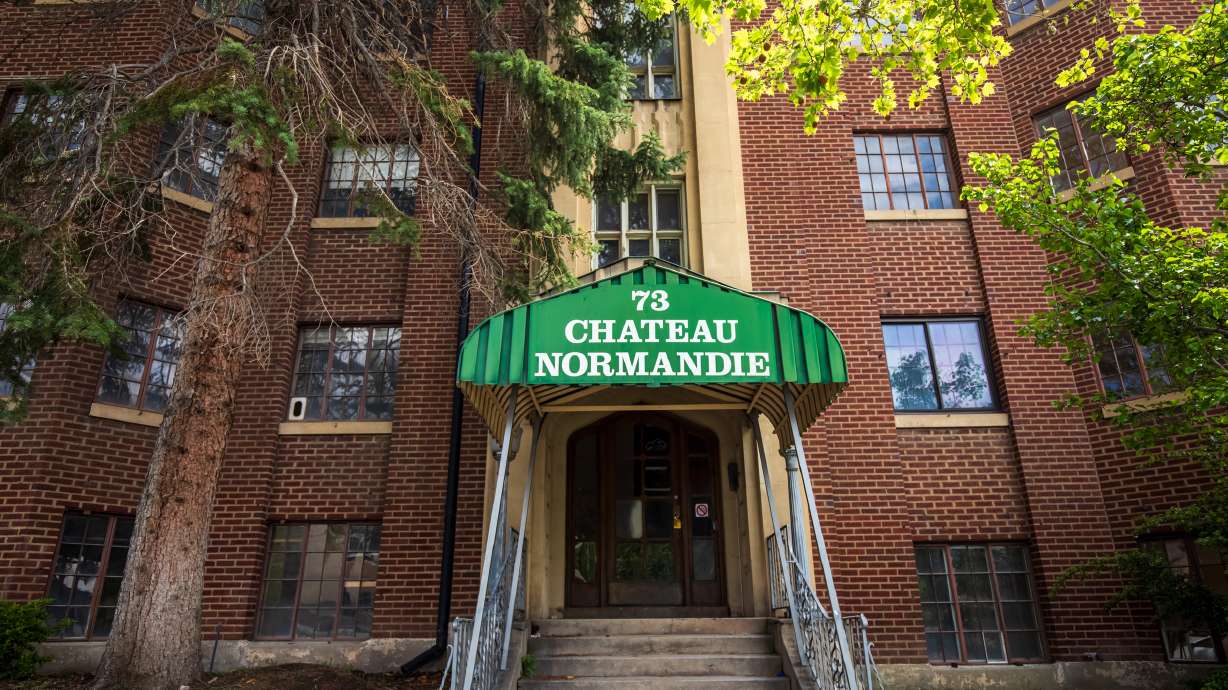Estimated read time: 4-5 minutes
This archived news story is available only for your personal, non-commercial use. Information in the story may be outdated or superseded by additional information. Reading or replaying the story in its archived form does not constitute a republication of the story.
SALT LAKE CITY — Utah's capital city was surging, and there wasn't enough space to build homes for everyone moving in.
The housing crunch called for apartments. Lots of apartments, which — in some cases — dwarfed the existing buildings in the neighborhood.
This was the story of the early 20th century in Salt Lake City as its population nearly tripled between 1900 and 1930, rising from about 53,000 to 140,000 residents in 30 years.
It's also a story that could be told today. As crews put the final touches on Astra Tower, the state's tallest building in downtown Salt Lake City, dozens of large but not quite as expansive apartment complexes have emerged over the past decade. They've built onto the density that emerged over a century ago.
"Even if history is not repeating itself, it's definitely rhyming in this case," said Elizabeth Hora, a public archaeologist for the Utah State Historic Preservation Office.
The growth of apartment living
Apartments first reached Utah in the early 20th century. While there were about a dozen apartment complexes in Ogden and a few early buildings scattered across Provo, Logan and Cedar City, most could be found in Utah's capital city.
Over 180 apartment buildings were constructed between 1902 and 1931 as the population skyrocketed, said Roger Roper, a historian and former deputy state historic preservation officer for Utah, who has researched this era of Utah buildings heavily.
The first buildings — such as the Bransford and Louise-Grace-Emery apartments — popped up around State Street and South Temple, designed primarily for the wealthy. Both are gone, but many of the other apartments that followed remain in the city today.

The buildings were generally made of brick and constructed on major roads primarily in the Central City and Avenues neighborhoods just east of the downtown core. With several at least three stories in height, the apartment buildings towered over the pioneer homes, reforming the city's residential appearance.
The apartments were traditionally designed to target the middle and upper middle class amid the city's growth spurt. Roper said they were marketed as having "modern conveniences" like gas or electric stoves, refrigerators, laundry, phones or even the Murphy bed in some cases. These were things not often found in older homes.
"It was very convenient to move into an apartment," he said. "This was part of the marketing here. This was a new type of urban living that had modern features that you probably couldn't afford if you were just building a house."

Many renters were single, widowed or had just moved to the city, per census records and other historic data. The average age of a person living in an apartment was 41, compared to 54 for homeowners. Only about one-tenth of homeowners were under 35 years old, while 39% of renters were in the same age range.
Roper has worked to get many of the apartments listed on the National Register of Historic Places, but not all qualify. Landing on the register opens up state and federal tax incentives for owners who preserve them.
That can keep the buildings around as a reminder of the growth that emerged during this period in city history while still providing housing units for today.
"They tell a very important story," Roper said.
A rhyming moment today
Salt Lake City's population dipped shortly after the growth of apartments as many residents fled to the suburbs in the 1960s. A downward population trend lasted into the '90s before the city's population rebounded. It's grown ever since, hitting close to 200,000 four years ago and still growing.
This created a new wave of apartments, some built over the first wave.
Apartments are now tracked by total units, and there were just over 12,000 apartment units within Salt Lake City ZIP codes in 2000, according to a 2019 report by the University of Utah David Eccles School of Business.
That's fewer than the total number of units permitted over the past decade. Permits for 13,400 units in Salt Lake City were approved between 2014 and when another report from the university's Kem C. Gardner Policy Institute came out in 2022. The city had a large chunk of the county's nearly 150,000 units at the time.

Salt Lake City also unveiled a plan last year to add 10,000 new housing units within five years to address the affordability challenges caused by housing shortages. City leaders have also made changes to increase building heights and approved more accessory dwelling units to meet the growing housing demands.
Roper hasn't tracked this in the same way he knows the story of the past, but he witnessed the growth while living in downtown Salt Lake City for four years. He believes what's happening goes "beyond what had happened a century ago" because of the size of the buildings and their widespread locations.
"They're kind of like on steroids — these new 21st-century buildings," he said. "They're much larger than the older ones, and they occupy (space) not only in height but in footprint. Some of them dominate the entire block now."
Only time will tell how many of them will remain a century from now to share the story of this period in city history.










